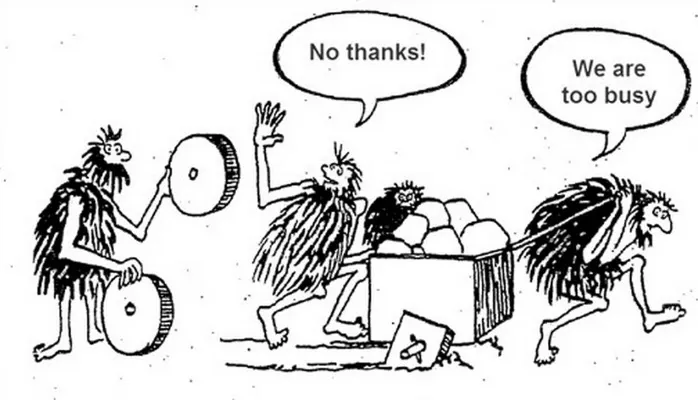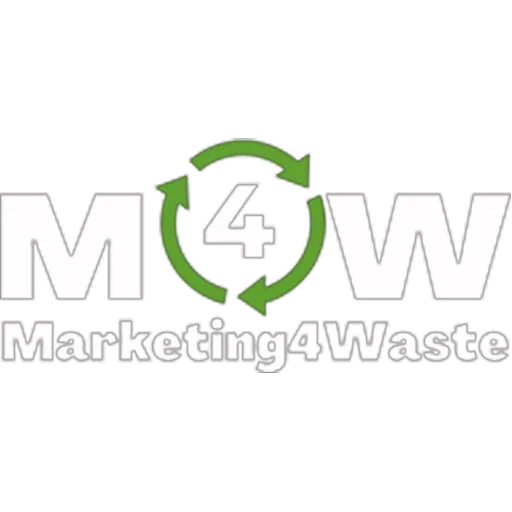Increase the Revenues of Your Waste Company With the Tips Shared in Our Blog Articles

You Don't Have to Reinvent the Wheel to Innovate Your Waste Management Company
As a waste management company owner, you might feel the pressure to constantly innovate and stay ahead of the competition. The good news is, you don't have to reinvent the wheel to make significant strides in your business. In fact, leveraging existing successful business models can provide the boost you need to elevate your company to new heights. There are over 55 well-established business models that have proven their worth across various industries, and many of these can be adapted and combined to fit the specific needs of your waste management company.
The Power of Proven Business Models
The idea here is that innovation doesn't necessarily mean creating something entirely new from scratch. Instead, it can be about smartly adapting and combining existing models to fit your unique needs. This concept is particularly relevant for the waste management industry, which is ripe for innovative practices that can improve efficiency, customer satisfaction, and profitability.
Combining Models for Maximum Impact
Here are a few ways you can apply and combine these tested business models to transform your waste management company:
1. Subscription Model
Consider implementing a subscription-based model where customers pay a regular fee for waste collection services. This model ensures a steady stream of revenue and enhances customer loyalty. Offering tiered subscription plans can cater to different customer needs, from residential clients to large corporations. This model has been used successfully in various industries, providing a predictable income and allowing for better financial planning.
Implementing the Subscription Model
To implement this model, start by segmenting your customer base. Identify the different needs and usage levels of your residential and commercial clients. Then, create tiered subscription plans that offer varying levels of service. For example, a basic plan could include weekly waste collection, while a premium plan might offer additional services such as bulk waste pickup or specialized recycling programs.
2. Freemium Model
Introduce a freemium model, where basic waste collection services are provided for free or at a low cost, with premium services available for a fee. This approach can attract a larger customer base and upsell premium services like specialized recycling programs or bulk waste pickups. The freemium model works by getting customers in the door with a basic service and then converting a percentage of those customers to paid plans.
Implementing the Freemium Model
Start by offering basic waste collection services at a minimal cost. Promote this service to attract new customers. Once you have a solid customer base, introduce premium services that address more specific needs, such as hazardous waste disposal or organic waste recycling. Make sure to highlight the added value of these premium services to encourage upgrades.
3. Circular Economy Model
Adopt a circular economy model that emphasizes recycling and reusing materials. By partnering with local businesses and communities, you can create a system where waste materials are repurposed into new products. This not only reduces waste but also opens new revenue streams. Companies that have successfully implemented elements of this model have seen significant benefits in terms of cost savings and new business opportunities.
Implementing the Circular Economy Model
To implement this model, start by identifying potential partners in your community who can use recycled materials. This could include manufacturers, artisans, or even other waste management companies. Establish partnerships and create a closed-loop system where waste materials are collected, processed, and repurposed into new products. Promote these partnerships to your customers as a way to reduce waste and support the local economy.
4. Platform Business Model
Create a platform that connects waste generators with waste collectors and recyclers. This model can optimize resource allocation and improve service efficiency. By acting as a middleman, your company can take a commission on each transaction, facilitating a more dynamic and efficient waste management ecosystem. This model has been successful in various industries, providing a scalable and flexible solution.
Implementing the Platform Business Model
To implement this model, develop a digital platform that connects waste generators with waste collectors and recyclers. This platform should allow users to schedule pickups, track waste collection, and request recycling services. Implement a rating and review system to ensure quality service. Promote the platform to both waste generators and collectors, highlighting the benefits of streamlined operations and improved efficiency.
5. Peer-to-Peer Model
Encourage a peer-to-peer approach, where communities can share resources and services. This model can be particularly effective in reducing operational costs and fostering community engagement. Think of it as a neighborhood-driven waste management system where residents collaborate to manage waste more efficiently. The peer-to-peer model leverages the power of community to create a more sustainable and cost-effective solution.
Implementing the Peer-to-Peer Model
To implement this model, start by organizing community meetings to discuss waste management needs and solutions. Encourage residents to share resources, such as compost bins or recycling facilities. Create a digital platform or mobile app where residents can coordinate waste collection and recycling efforts. Promote community events and initiatives that encourage participation and collaboration.
Implementing the Models
To effectively implement these models, consider the following steps:
1. Assess Current Operations
Before making any changes, it's essential to understand your current operations thoroughly. Conduct a comprehensive audit of your existing processes, customer base, and financial performance. Identify areas where efficiency can be improved and where customer needs are not being fully met. This assessment will provide a baseline against which you can measure the impact of the new business models.
2. Pilot Programs
Start with small-scale pilot programs to test the feasibility and impact of the new models. Choose a specific geographic area or a subset of your customer base to implement the pilot. This allows you to experiment with minimal risk and gather valuable data on what works and what doesn't. Monitor the pilot closely and be prepared to make adjustments based on real-world feedback.
3. Customer Feedback
Engage with your customers to gather feedback and refine your offerings. Use surveys, focus groups, and direct conversations to understand their needs and preferences. Pay attention to both positive and negative feedback. Positive feedback will help you identify what aspects of the new model are working well, while negative feedback will highlight areas for improvement. Incorporating customer feedback into your strategy will help ensure that the new models meet their needs and enhance their experience.
4. Scalability
Ensure that the models you choose are scalable and can grow with your business needs. Scalability is critical for long-term success. As your customer base grows, your new business models should be capable of handling increased demand without a significant increase in costs. Evaluate the scalability of each model during the pilot phase and make necessary adjustments to ensure they can be effectively scaled up.
5. Technology Integration
Leverage technology to streamline operations and enhance customer experience. Implementing digital platforms, mobile apps, and data analytics can help you manage your waste management services more efficiently. Technology can also improve customer engagement by providing easy access to scheduling, billing, and customer support. Invest in the right technology to support your new business models and ensure seamless integration with your existing systems.
6. Marketing and Promotion
Once you have refined and tested your new business models, it's time to promote them to your target audience. Develop a comprehensive marketing strategy that highlights the benefits and unique features of your new offerings. Use a mix of online and offline marketing channels to reach your customers. Consider running promotional campaigns, offering discounts, or providing free trials to encourage adoption.
7. Training and Development
Train your staff on the new business models and the technology that supports them. Ensure that everyone in your organization understands the new processes and can effectively communicate the benefits to customers. Investing in staff training will help ensure a smooth transition and improve overall customer satisfaction.
8. Continuous Improvement
Innovation is an ongoing process. Continuously monitor the performance of your new business models and look for opportunities to improve. Gather data, analyze trends, and stay informed about industry developments. Regularly review your strategies and be willing to make adjustments as needed to stay competitive and meet evolving customer needs.
Conclusion
Innovation in waste management doesn't require a complete overhaul of your business. By borrowing and combining proven business models, you can introduce effective and efficient practices that boost your company's performance. Embrace the wealth of knowledge available and watch your waste management business thrive in today's competitive market.
Remember, you don't have to reinvent the wheel; sometimes, you just need to give it a new spin. By leveraging existing successful business models and adapting them to your unique needs, you can create a thriving waste management company that stands out from the competition.
Some Examples
To illustrate the potential impact of these business models, let's look at some examples of waste management companies that have successfully implemented them.
Example 1: Subscription Model in Action
A waste management company in California introduced a subscription-based model for residential customers. They offered three tiers of service: basic, premium, and deluxe. The basic plan included weekly waste collection, the premium plan added recycling services, and the deluxe plan offered bulk waste pickup and electronic waste recycling. This approach not only increased customer retention but also provided a steady revenue stream that allowed the company to invest in new technologies and expand their services.
Example 2: Freemium Model Success
In New York, a waste management startup adopted the freemium model by offering free basic waste collection services to small businesses. They then upsold premium services such as organic waste recycling and secure document disposal. By attracting a large customer base with the free service, they were able to convert a significant percentage to paid plans, driving substantial revenue growth.
Example 3: Circular Economy Model Implementation
A waste management company in the Midwest partnered with local manufacturers to create a circular economy model. They collected waste materials such as plastics and metals, processed them, and sold the recycled materials back to the manufacturers. This closed-loop system not only reduced waste but also created a new revenue stream for the company. Additionally, it strengthened their relationships with local businesses and positioned them as a
Are you still thinking of reinventing the wheel?
Call me at +1 (727) 307-2695
I’m sure that in a simple call, you’ll change your idea.
All the best
Sam
The Waste Management Whisperer


© 2026 Marketing4waste - All Rights Reserved,
Marketing4Waste is a brand of MiM MarketingInterimManagers LLC
+1 801 804 5730

